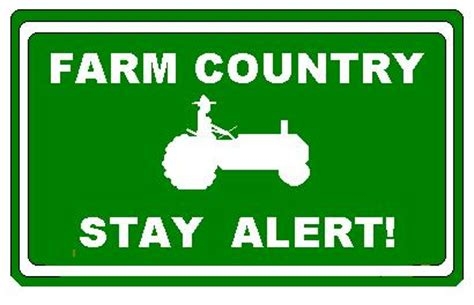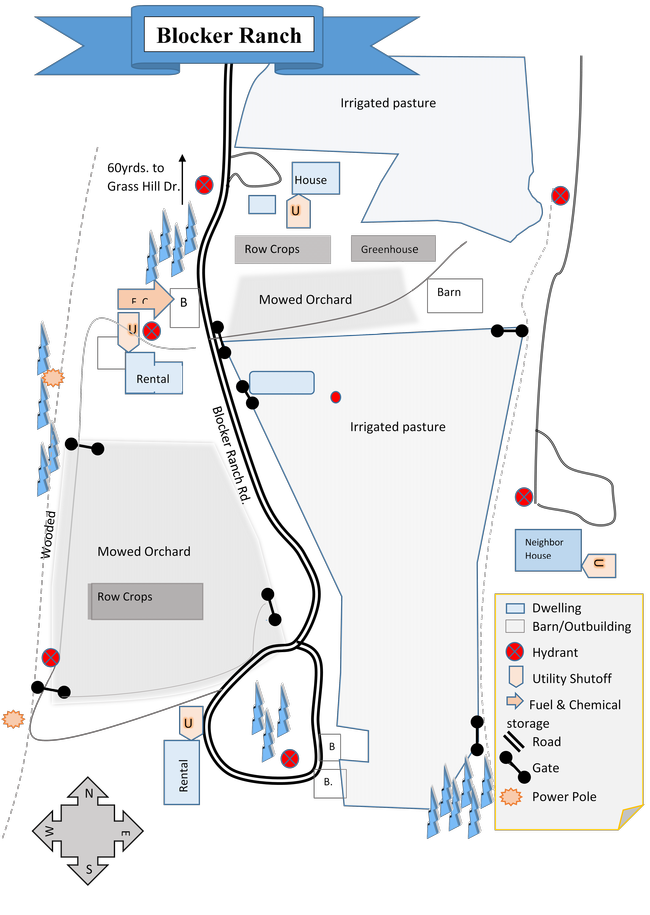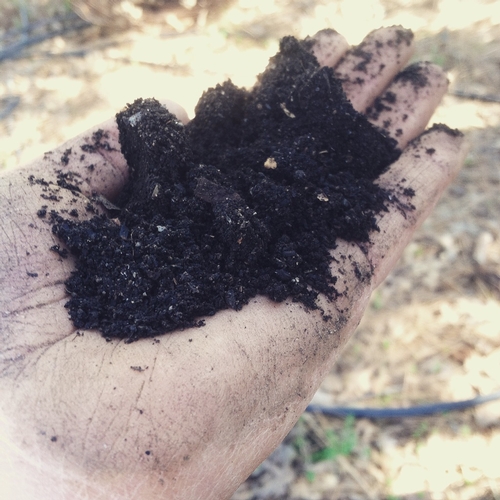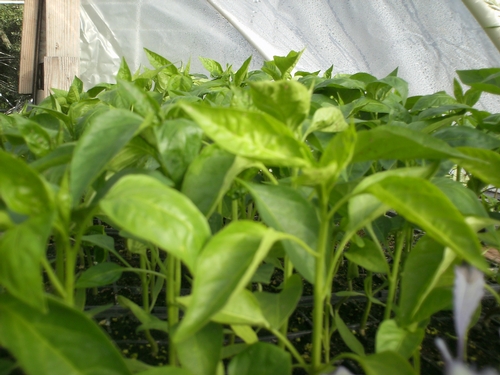Posts Tagged: farm planning
Farm Preparation for Wildfire and Other Emergencies

According to many state fire officials, we no longer have simply a ‘Fire Season' but a ‘Fire Year'. In winter drought conditions, some parts of our region do not receive enough rain to mitigate fire danger. It is more important than ever to constantly assess your farm for fire safety and be prepared for any emergency.
The following information will assist you in thinking through four important areas of disaster preparedness for your farm: Paperwork & Plans, Farm Map & Layout, Tools & Machinery, and Operations & Training.
Paperwork & Plans:
- Conduct a fire risk assessment and record your findings. Assess brush clearance, road access, evacuation routes, defensible space, topography (fire climbs hills quickly), and water sources. If needed, make a plan to address any critical issues.
- Evaluate current insurance coverage to ensure adequate coverage for farm assets. Consider livestock, crops, buildings, and equipment.
- Keep up-to-date production, marketing, and financial records. Check the Foothill Farming website resources on risk management and business planning tools for templates. Scan or store them on a USB flash drive or external hard drive.
- Make a farm communication plan. What happens if you are not home during a disaster situation? Do you have phone numbers and good relationships with neighbors? Are the phone numbers written down for your family members and employees as well?
- Create a farm emergency plan, use the following free online templates or use them as a guide to create one more suitable for your own farm.
- http://ucanr.edu/sites/placernevadasmallfarms/files/289237.pdf
- https://www.formsbank.com/template/325465/emergency-plan-for-farm-template.html?page=5
- http://www.maeap.org/uploads/files/EMERGENCY_PLANNING_fillable_Form_E2575-ET_AA.pdf
- http://www.ncagr.gov/disaster/Farm-Emergency-Plan-Template.pdf
Developing a farm emergency plan before a disaster can help you respond more rapidly and objectively.
Farm Map & Layout:
- A farm map should be part of your emergency plan. Create a map including symbols and a key for the following:
- Homes, barns, and outbuildings.
- Utility shutoffs.
- Power and utility lines.
- Fuel and chemical storage.
- Roads and bridges (including weight limitations).
- Water sources and delivery systems.
- Gates (including combinations).
- Fuel breaks.
- Any other possible farm hazards.
You may include brief general guidance for emergency responders on the map as well.
- A well-maintained and accessible water source is critical. If possible, consider a water source for fire trucks. An accessible source includes:
- Defensible space.
- Gravel road access within 12 feet of water source.
- Minimum 45-foot radius turnaround close by.
- Post permanent signs indicating water source location.
- For more detailed information about what is needed at a water source, check out this information from Oregon State Extension https://catalog.extension.oregonstate.edu/sites/catalog/files/project/supplemental/pnw618/pnw618-chapter6.pdf
- Farm design should incorporate these principles, especially around structures. Create at least 100 feet of defensible space by:
- Removing flammable objects from around barns or dwellings (e.g. flammable vegetation, feed bags, cardboard boxes, plant debris, fuel, etc.).
- Breaking up fuel continuity by separating plants from each other in gardens and landscape design.
- Taking care in selecting, locating, and maintaining trees.
- Post a clearly visible sign with property name and number at the entrance.
Tools & Machinery:
- Carry fire extinguishers and fire tools, especially in off-road vehicles. (e.g. trucks and tractors), CalFire requires a 5-gallon water supply and a fire tool be carried in wildland settings – consider adding this equipment to your tool box!
- Conduct frequent inspections of farm machinery for debris removal. Pay attention to hazards associated with exhaust systems and catalytic converters.
- All farms should have proper personal firefighting equipment such as shovels, hoes, and fire extinguishers that all farm employees can carry.
- Use rodent deterrents as they can chew through electrical insulation.
- Limit or postpone machinery use on high fire danger days. If use is unavoidable, plan for competing tasks before 10:00 AM.
- Stay 30 minutes after machinery use is shut off to monitor fire risk.
- More tips on preventing farm equipment fires, http://www.redrivermutual.com/wp/wp-content/uploads/Preventing-Farm-Equipment-Fires4.pdf
Operations & Training:
- Conduct an annual fire plan and equipment “refresher” for all farm personnel. Consider labeling safety equipment and fire tools on your map, with signs for your employees and family. Train folks on how to use this equipment.
- Have a routine for “red flag days” such as delaying mowing or machinery use.
- Although California law requires all electric fences to have low-impedance chargers, check frequently to ensure wires are free of materials that may cause the fence to arc. Always operate according to manufacturer directions.
- Restrict or clearly designate smoking areas.
- Include fire danger mitigation and forest management in annual planning.
Fire prevention should be a year-round activity in our fire-prone region. Be sure to consider the needs of both family and farm personnel in any emergency situation. Proper planning now will help mitigate the inevitable stress involved in farm emergencies. We would love to hear your thoughts, plans, and ideas related to disaster preparedness. Please feel free to comment below.
Planning for Drought Resilience
A quick scan of drought related news is not good for my anxiety levels. A March 21st article in The Atlantic reports how our warmest winter in 100 years (by 4.4 degrees on average) is impacting agriculture across California: 17,000 farmers lost their jobs in 2014 and cost the ag sector $2.2 billion. For the first time in 75 years, the Department of Water Resources Sierra snowpack survey for April 1st had no snow to survey. The 2012-2014 California drought is reported to be the worst in 1,200 years! I am growing tired of watching the weather forecast as well. The pattern thus far: a storm is forecast, the storm arrives and delivers a fraction of what was expected. My new plan is to stop focusing on the lack of rain and snow and start getting serious about building drought resilience into our farm plan.
The reality is that we won't be able to sink a new well or dig a new pond. We are a small farm with very limited capital purchasing power. Does our lack of financial wiggle room mean that this drought may put us out of business? I am hopeful that we can continue to farm within the new parameters that this drought may impose on our business. But we won't be able to do this without a plan.
What is the worst case scenario on your farm or ranch? On my own farm, the worst case scenario would be the complete suspension of our irrigation water allotment. If our water allotment was drastically decreased, could we still make a profit from our farm? Here's a look at what we are planning to do to increase the drought resilience of our land and business.
A simple first step is to increase our soil organic matter. We traditionally grow both summer and winter cover crop on fallow ground. This summer's growing season, we are taking even more land out of row crop production and will plant more summer cover crops. Our favorite is sorghum Sudan grass. Unlike Johnson grass which it is very similar to in appearance, Sudan grass does not grow rhizomes and spread underground. It requires very little water and is a great way to protect open ground in the summer. According to UCCE Horticulture and Small Farms Advisor, Cindy Fake, a 1% increase in soil organic matter results in an additional 16,000 gallons of water retained per acre foot of soil! That is a lot of water. This ATTRA publication has a lot of information on creating drought resilient soils: http://cses.uark.edu/ATTRA_drought.pdf
Another goal this season is to understand exactly how much forage our pigs are able to access from the irrigated pastures we raise them on. I want to know exactly what it would cost if we had to buy in all of the feed for our animals. Understanding the financial impact that the loss of our irrigation water would have on our farm will help us make decisions about the size of our hog herd. If we decrease by 25%, can we keep our feed bill affordable? If there was no water at all, how much would it cost to keep our breeding animals alive?
We irrigate our row crops as efficiently as we can. We deliver water through drip tape and irrigate in the evenings once the day has cooled and evapotranspiration loss is decreased. But I am finding that this is still not enough to make our farm truly drought resilient. I need to know at what point in the growth cycle the crops I produce are most susceptible to water stress. In other words, how can I achieve profitable yields with the least amount of water possible? If I had to use my residential water supply to grow a crop, what is the least amount of water I could utilize without seriously impacting yield? Here is a link to a publication on water efficiency and the critical periods for water stress in orchard crops and vegetables: http://ucanr.edu/sites/placernevadasmallfarms/files/180093.pdf.
Understanding the economics of each of my crops is vital to drought resilience. I need to know which crops to prioritize in the face of limited irrigation water. Are dahlias or sunflowers a more profitable crop for us? Can we increase our early season production and limit production when the temperatures hit the high 90s? I cannot make these decisions without a thorough understanding of the income and expense associated with each crop. The crop metric calculators created by UC Extension can assist you in determining the profitability of each crop you grow. http://ucanr.edu/sites/placernevadasmallfarms/UCCE_Enterprise_Calculators/. By combining my understanding of which crops need water and when with my knowledge of income and expense for each crop, I can begin to create my drought contingency crop plan.
Out of habit, I just checked the weather forecast and saw that some rain is predicted for the end of the week. The predicted moisture will help the cover crop and pasture grow, but it won't alter the long term effects of this drought.
News links and References:
http://www.theatlantic.com/business/archive/2015/03/the-economics-of-californias-drought/388375/
http://www.water.ca.gov/news/newsreleases/2015/040115snowsurvey.pdf
Scott, H.D., L.S. Wood, and W.M. Miley. 1986. Long-term effects of tillage on the retention and transport of soil water. Arkansas Water Resources Research Center. Publication Number 125. 39 p.
Planning the year ahead
Ah winter, the season for a farmer to relax. Well not really. I like to use my “down time” to plan for the coming growing season. I find that the more carefully I plan, the happier I am once I get into the frantic just-trying-to-keep- up-with-things season. A plan gives me peace of mind because I know that I am not just plunging blindly ahead hoping that I will have enough produce to fill the Community Supported Agriculture (CSA) boxes and with any luck make some money this year.
I always start my planning process by figuring out how much I want to get paid for the work I do. No one should work for free and this goes for farmers, too. Many farmers work like crazy all season long and usually don’t pay themselves until the end of the year, all the while hoping that there will be some money left by the time they get to the end of the year. Don’t be one of these farmers. If you become one you will get discouraged and quit. So, make a plan to pay yourself and pay your expenses.
I like a very detailed plan that determines how much of each item to grow, what bed the crop will occupy, when to start seeds in the greenhouse, how many succession plantings to do, and on and on. The plan doesn’t have to be this detailed, but I find that the more details I cover the smoother the season runs and the less anxiety I have about meeting my commitments. There are many ways to plan your season: some farmers use pieces of paper and some use specialized spreadsheets that are available for purchase. No matter the format, the important part is that you have thought through the season and know where you are going.
Jim Muck, Jim's Produce, Wheatland




